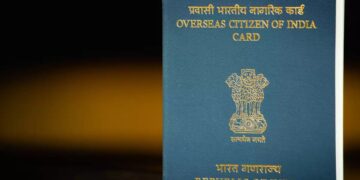In response to growing concerns over China’s assertiveness in the region, the Philippines is strategically enhancing its defense capabilities through increased collaboration with the United States, as reported by Voice of America.
Under the Enhanced Defense Cooperation Agreement (EDCA), the Philippines is expanding US military presence at key locations, including Naval Base Camilo Osias on the northern tip of its largest island. This seemingly inconspicuous facility is undergoing significant transformations, including a revamped airstrip, a new pier, and expanded soldier accommodations, with US funding playing a crucial role.
The collaboration allows the US military to rotate troops and station weapons at strategic locations, such as Naval Base Camilo Osias, which is just 400 kilometers from Taiwan. This move is part of a broader expansion under the EDCA, a bilateral deal signed in 2014, facilitating increased American military presence across the Philippines, totaling nine strategically located sites.
The historical context of US-Philippine relations adds complexity, with the Philippines having been a US territory from 1898 to 1946. In 1951, the two countries established the oldest US defense treaty alliance in Asia, but the last permanent US military presence was removed in the early 1990s, aligning with concerns over Philippine sovereignty.
Recent years have seen a recalibration in the Philippines’ stance, gradually welcoming back visiting US forces through agreements like the EDCA. President Ferdinand Marcos Jr., who assumed office in 2022, has played a pivotal role in steering the country toward closer alignment with the United States.
The collaboration gains strategic importance against the backdrop of heightened regional tensions. In response to China’s assertiveness in the South China Sea and harassment of Philippine vessels, the Philippines aims to strengthen its defense capabilities. With concerns about potential conflict in Taiwan and China’s belligerent rhetoric, the EDCA sites, especially those in the north, are considered crucial not only for military modernization but also as a deterrent against China’s expansionist goals.
Jonathan Malaya, Assistant Director General of the Philippines National Security Council, emphasizes the need for a robust military presence amid territorial disputes with China. The potential of US troops acting as a deterrent gains significance, particularly as China escalates its regional ambitions.
A recent diplomatic spat between China’s Ambassador Huang Xilian and the Philippines adds another layer of complexity. While criticizing the EDCA agreement, Huang issued a veiled threat, linking the Philippines’ stance on Taiwanese independence to the fate of overseas Philippine workers in Taiwan. This underscores the multifaceted nature of the geopolitical challenges faced by the Philippines.
However, not all stakeholders view the growing US military presence favorably. Manuel Mamba, Governor of Cagayan Province, where two EDCA sites are located, raises historical parallels and expresses concerns about foreign forces within Philippine territory. In response, MaryKay Carlson, the US Ambassador to the Philippines, assured that the United States respects the Philippines’ territorial integrity, highlighting President Marcos’ vow not to abandon any territory to a foreign power. She also pointed out China’s establishment of militarized bases within the exclusive economic zone of the Philippines.

















Comments